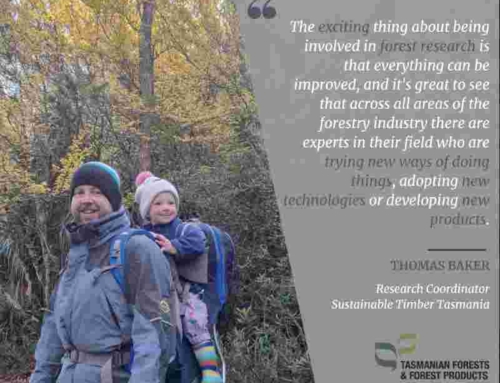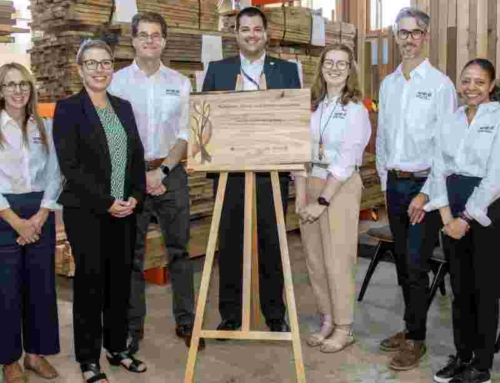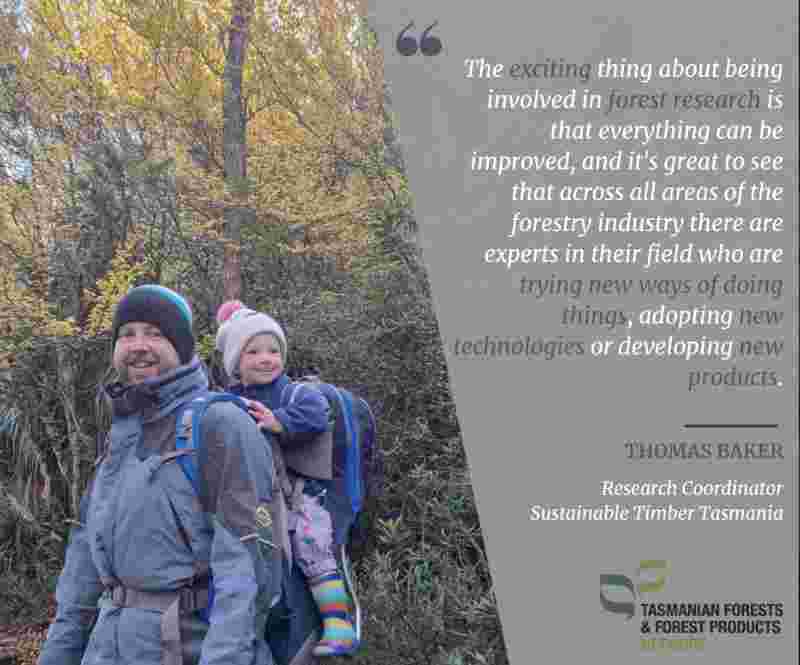Tassie architect promotes the benefits of local timber
Only two months into his role, Tasmania’s new northern-based Wood Encouragement Officer has already begun working with stakeholders to promote project outcomes using Tasmanian produced wood and hopes to facilitate a healthier culture around wood.
As a registered architect, Gary Fleming understands only too well the benefits of incorporating locally sourced wood and wood products into buildings.
“Historically, our buildings were constructed—out of necessity—almost entirely from wood,” Gary said.
“From this, other benefits became apparent such as aesthetics, tactile qualities, durability, versatility, sense of wellbeing and it is renewable.
“In current times locally sourced and produced, low embodied energy materials make a lot of sense, environmentally and economically.”
Gary said his new role—which is a government-funded joint appointment by the Tasmanian Timber Promotions Board and the University of Tasmania—is focused on making meaningful connections with industry stakeholders who both produce, sell and use wood.
“The use of wood and wood products is multi-faceted. I have started working with government agencies looking at policies and incentives and how this might better inform and assist with future projects, including the development of programs and partnerships that encourage a culture of wood,” he said.
Over the term of his employment, Gary will seek out project opportunities where locally sourced wood can be showcased in traditional and innovative ways.
He said open communication with industry stakeholders and the facilitation of meaningful connections, as well as assistance in problem solving at any stage of the building process, is key.
‘Encouraging a healthy culture of wood not only has benefits for the industry but also for the wider community and the whole of Tasmania,” Gary said.
Commencing work as a signwriter in the late ‘70s, the father of six (and grandfather of two) said he’s always been creative—even as a child—and still enjoys making guitars in his spare time.
“I was always fascinated with making things and how they go together, in fact I still am. This fascination has always been a part of my working career and has provided me with hands on experience and skills in multiple disciplines,” he said.
He explained that the signwriting company he began working for also manufactured products made from wood, plastics, metal and paints which exposed him to a diversity of materials. He soon began creating wrought iron furniture, gates and art pieces.
“It was the time I spent installing these items on some spectacular houses in Western Australia that ultimately inspired me to study architecture.”
Gary believes the Tasmanian timber industry produces a range of high-quality products but that the complexities of the building and construction industry means there are increasing pressures for the local sector to ensure products are code compliant.
“The industry must work together to ensure that using locally sourced timber in buildings is a desirable option,” Gary said.
“There should also be ongoing education and knowledge sharing with the building and construction sector to ensure locally sourced wood is a significant part of future projects,” he said.
TTPB Deputy Chair, Shawn Britton agreed.
“The timing of this new role is perfect as the need for timber and wood is increasing, as we know wood has multiple benefits from environmental, health and wellbeing, and creating a circular building sector in the State,” Mr Britton said.
When he’s not spending time gazing across the water at Flinders and Cape Barron islands from his favourite spot near Musselroe Bay, you’ll find Gary at the University’s Centre for Sustainable Architecture with Wood at the School of Architecture and Design.


















